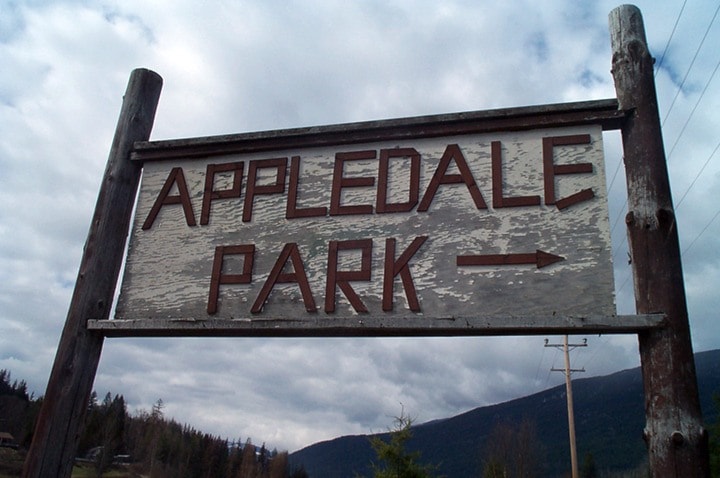Fifth in a series on West Kootenay-Boundary place names
You’d think the Slocan Valley hamlet of Appledale must have taken its name from its fruit industry. Indeed, the Encyclopedia of British Columbia says it was “Named for the area’s extensive orchards.” But it was probably called that before there were any fruit trees.
The West Kootenay Orchard Association owned the land and likely named it to inspire settlement. The earliest known reference is in a letter from the company of September 12, 1910, although it appears to have been known as Appledale, or Appledale Orchards, for some time before that.
Nelson real estate agent Jerome L. Hirsch bought the lands from lumberman John B. Winlaw in 1910 for $80,000, and formed a partnership with James Chapple and Judge James Goss of Billings, Montana.
In another letter, the company claimed “At Appledale we have over 3,000 acres of fine, level land, and the best feature of it all is that this land is practically cleared, having been thoroughly burned over.” (For emphasis, most of this was in written in all caps.)
“Appledale is in a proven fruit district; there are old bearing orchards on the land and the soil will raise the very finest apples, pears, peaches, quinces, apricots, plums, prunes, strawberries, gooseberries, raspberries, blackberries, etc.,” the promoters promised.
Not all who took the bait felt satisfied, however. Burnaby resident Dave Martin’s grandparents, Henry and Nellie Green, bought land sight unseen at Appledale on a bench above the Slocan River. They arrived with four children in September 1919 to find their new house uninhabitable and the property unsuitable for farming. They stayed less than a year.
By the end of 1912, the West Kootenay Orchard Association had sold over $153,000 worth of Appledale property and Hirsch built a house at 312 Latimer Street. But he suffered insomnia, nervousness, and recurring flu bugs. “I feel sad over the whole business,” he wrote Goss, “as my best efforts seem to fall far short of the results I should like to bring about, yet I feel almost helpless to do better.”
Doctors prescribed a drier climate and he began wintering with his family in Los Angeles. He died there in 1932.
In 1983, as construction workers renovated the Nelson Home Furniture building on Josephine Street, they discovered a cache of Hirsch’s letters and business papers in the walls, now held by the Shawn Lamb Archives at Touchstones Nelson.
The Appledale post office opened April 1, 1914, closed April 19, 1955, re-opened on November 16 of the same year at a different location, and then closed on July 20, 1959 after it burned down. For many years, the post office and store were in the Kopecki and Woyna families.
The Kopeckis’ son Robert became well known as announcer Bob Kaye on Nelson radio stations CKLN and CKKC.
Next week: Applegrove and Argenta
Previous installments in this series
